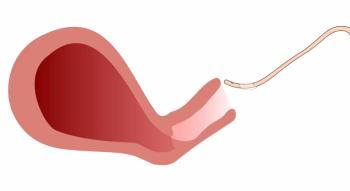The risks of morbidity and mortality are increased among premenopausal women underusing estrogen therapy (ET) following oophorectomy, according to a recent study published in the American Journal of Obstetrics & Gynecology.1
Takeaways
- Premenopausal women who do not use estrogen therapy (ET) after oophorectomy face higher risks of morbidity and mortality.
- Over 90,000 US women undergo bilateral salpingo-oophorectomy annually, many aged under 50 years, leading to surgical menopause and its associated health risks.
- Estrogen deprivation from oophorectomy can result in metabolic disorders, cardiovascular disease, cancer, neurological issues, and increased mortality.
- A population-level study found that inadequate ET use is linked to significant increases in coronary heart disease, stroke, and cause-specific mortality over 25 years.
- The study underscores the critical importance of hormone therapy until the age of natural menopause to protect the health of women undergoing surgical menopause.
A bilateral salpingo-oophorectomy (BSO) is performed for over 90,000 US women annually. Of these women, over half are aged under 50 years, leading to surgical menopause.
Adverse effects of estrogen deprivation caused by bilateral oophorectomy (BO) include metabolic disorders, cardiovascular disease, cancer, and death. Data has indicated worsened outcomes among women aged under 50 years with BSO not using ET, which is recommended until the age of natural menopause to reduce morbidity and mortality.
Early loss of ovarian function has also been linked to adverse impacts on neurologic, bone, and connective tissue health.2 As BSO has been linked to increased rates of early menopause, hormone therapy is critical to protect this population.
Data has indicated a lack of ET use among premenopausal women undergoing surgery.1 However, data about the population-level health impacts caused by a lack of sufficient ET is lacking.
Investigators conducted a population-level study to evaluate adverse events linked to current patterns of ET use in premenopause women having BO with hysterectomy (HYST). Data assessed included age-specific incidence of lung cancer, breast cancer, colorectal cancer, stroke, coronary heart disease (CHD), and cause-specific mortality.1
Two sets of data on the hazard ratios and linked confidence intervals (CIs) were extracted. The first set compared risks among women with HYST vs those without HYST, while the second compared risks between women who had BO with HYST (BO-HYST) vs just HYST. Articles were obtained through searches of PubMed.
Participants included healthy women receiving a BO-HYST when aged 45 to 49 years. CIs were constructed for each outcome at 5-year intervals for 25 years. Mayo Clinic data was assessed to determine the BO rate among participants, and weighted averages were reported from 2010 to 2014 and from 2015 to 2018.
Concurrent HYST was reported in 89.1% of women with BO. The percentage of ET use among women with BO was 64.5%, making the number of women who received ET determined by multiplying this rate by the cohort size.
Diseases associated with estrogen deprivation caused by surgical menopause were identified based on Surveillance, Epidemiology, and End Results and International Classification of Diseases, Tenth Revision codes. Centers for Disease Control and Prevention WONDER data was assessed for linked mortality.1
When compared to optimal patterns of ET use, current practice patterns were linked to 72 additional CHD cases and 91 stroke cases across a 5-year follow-up period. After 25 years of follow-up, these increases were 658 for CHD and 881 for stroke. However, colorectal cancer cases were reduced by 94.1
A sensitivity analysis limited ET use to patients using hormonal therapy for over 2 years. In this analysis, current ET patterns were associated with 1742 more CHD cases, 2319 more stroke cases, and 248 less colorectal cancer cases after 25 years.
When evaluating mortality, current ET practices were linked to an additional 189 breast cancer deaths, 380 CHD deaths, and 759 all-other-cause deaths at 25 years after oophorectomy vs optimal patterns. In the sensitivity analysis limiting ET use to over 2 years, these numbers were 503, 1007, and 2015, respectively.
These results indicated increased morbidity and mortality from a lack of ET use following BO. Investigators concluded ovarian conservation should be addressed to improve outcomes.1
Reference
- Ferris JS, Suzuki Y, Prest MT, et al. Excess morbidity and mortality associated with underuse of estrogen replacement therapy in premenopausal women who undergo surgical menopause. Am J Obstet Gynecol. 2024;230:653.e1-17.doi:10.1016/j.ajog.2024.02.007
- Kingsberg SA, Larkin LC, Liu JH. Clinical effects of early or surgical menopause. Obstet Gynecol. 2020;135(4):853-868. doi:10.1097/AOG.0000000000003729
















